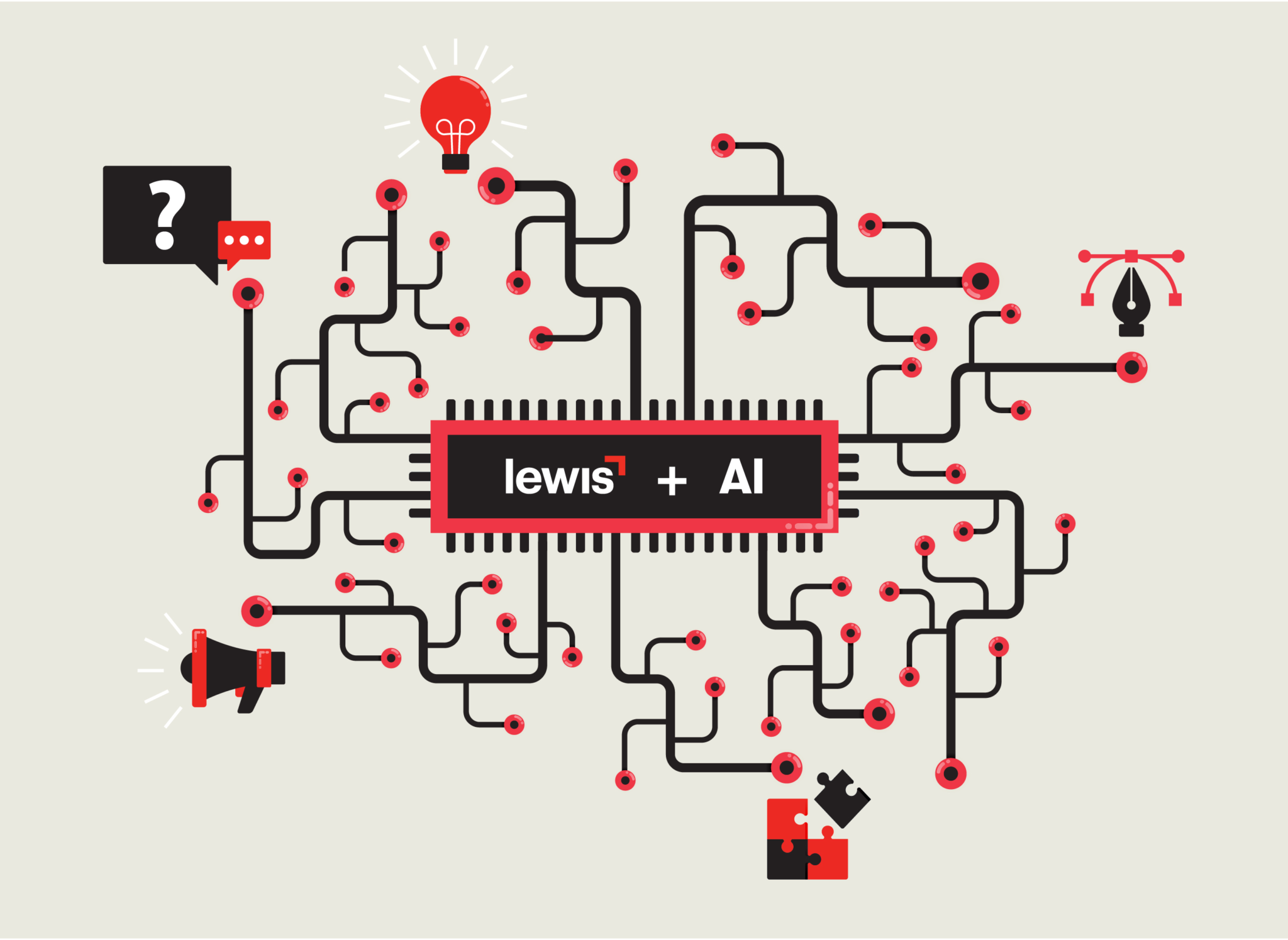
AI is already a part of the marketing industry. But how exactly are agencies like Lewis using it?
Bring up AI in a casual conversation and you will likely trigger a passionate discussion or even a heated argument. (And that’s before the subject of machines taking over the world even comes up). Let’s face it: good, bad or ugly—everyone has an opinion on AI these days and the subject is only about to get more complicated as time marches on.
This is especially true of the marketing industry. With the use of AI technology increasing with each passing day, many of our business partners are beginning to ask some important questions. How is AI being used at your agency? Which departments are most frequently using it? More importantly, exactly how effective is it?
A growing partnership
True to our innovative spirit, the Lewis team has been exploring the possibilities of AI technology since it first became widely available. In fact, many of our team members are already using AI tools such as ChatGPT, Jasper, and MidJourney on a regular basis. From marketing research and copywriting to image creation and even basic coding, our associates increasingly tap into the ever-evolving AI resources to help them solve some of their daily challenges.
There’s a “but”…
Of course, the extent to which they use it, and the results they get, can vary widely from case to case—and a lot of it has to do with AI’s relative newness. As is the case with any nascent technology, there are many limitations to what AI can currently accomplish. So no: there is no magic button you can press that will generate the work for you—at least not as of today. But we’re happy to report that AI does come in handy in a number of different ways.
How AI works for us
Most of our team members view AI as a useful thought-starter tool or a broad idea generator—and it’s a notion that holds true across multiple different departments.
“AI might provide that initial spark or impulse when you’re feeling stuck on a project,” says Tom Johnson, VP Integrated Creative Director. “It could even help you look at something from a slightly different angle.”
Struggling with Javascript? ChatGPT can help you generate some code—though it might need a few passes for the results to become usable. Need some new ideas for a product name? Jasper might come up with one or two off-kilter choices you might not be inclined to think of. Not sure about the syntax in the email you’re writing? Grammarly’s integrated AI feature can assist you with that.
Just don’t ask for too much
The key is knowing how to work around the technology’s current limitations. For example, while many members of the Lewis creative department use various AI programs to help them create images for storyboards, the results are often erratic and lacking in crucial details. And when one of our copywriters recently asked ChatGPT to create some TV scripts for him… well, let’s just say the results were unusable—not to mention unintentionally comical.
Not going anywhere anytime soon
One way or another, AI is here to stay. But using it to its fullest potential still requires human creative input and supervision, at least for the foreseeable future.
Looking forward, another intriguing question presents itself, quite similar to the one the marketing industry faced when computers began popping up on our desks: now that everyone has access to a potent new tool, how do you use it to take your work to a new level of creativity—and do so in a way that makes you stand out among your competitors?
Curious about how Lewis can help your business navigate challenges in the age of AI? Drop us a line at hello@lewiscommunications.com.


